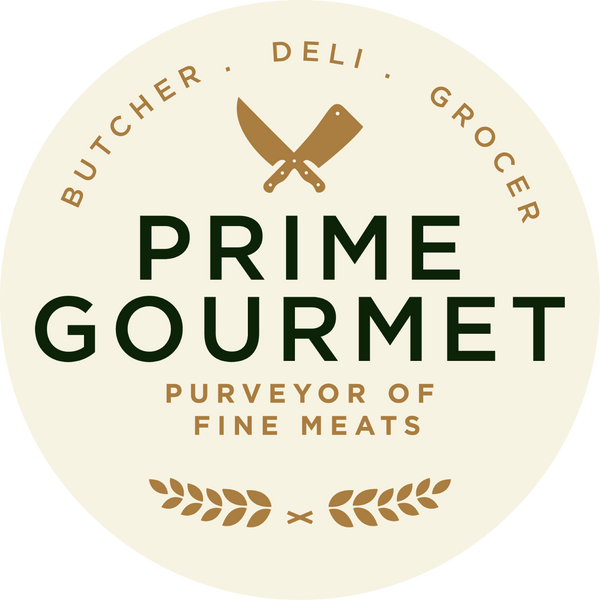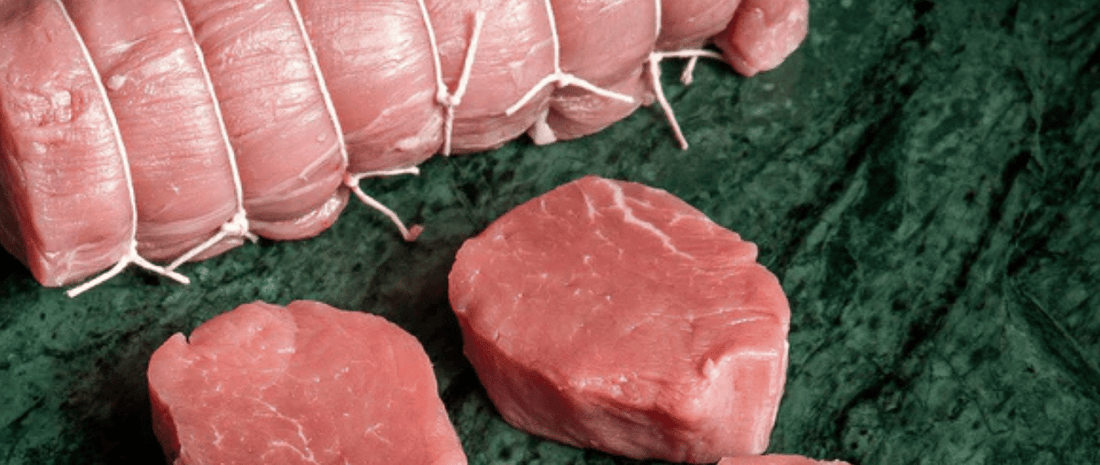Despite appearing on many restaurant menus, and being commonly used in Italian, French, German, Swiss, and various other cuisines, veal meat is an ingredient that many people know very little about. At Prime Gourmet, we are on a mission to change this. Veal is not only delicious but also extremely nutritious, and it’s ideal for home chefs who are looking for wholesome and tasty meats to cook for their family and loved ones. We are proud to offer a huge array of premium milk-fed and 100% halal Dutch veal products shipped straight from Holland.
Including everything from veal cubes, veal sausages, veal mince, veal escalope and veal schnitzel, to premium cuts like veal chops, striploin, tenderloin and more, our veal collection is perfect for special occasions, dinner parties and tasty home cooked meals. In this blog, we will break down what kind of meat veal is, where it comes from, its health benefits, and the difference between milk-fed and grain-fed veal.
What is veal?
Veal animal meat is essentially meat from a male calf, or a young male cow. As veal is butchered at an early age (normally between 16 and 18 weeks), its muscles are not as developed as the muscles found in the older cows that are used for beef products. This makes it easy to chew and digest, and means it has a wonderfully tender texture that works perfectly in all kinds of dishes.
Offering a milder flavour than beef, the unique taste of veal is often described as delicate, sweet and slightly gamey.
Is veal healthy?
Along with its delightful taste and buttery texture, another key benefit of eating veal is that it is highly nutritious. Low in fat and calories, it's ideal for those who are trying to eat well and look after themselves and their family. Veal's high-protein levels makes it a ‘go-to’ product for gym goers and fitness enthusiasts. In fact, a 3oz serving of cooked and trimmed veal contains less than 200 calories, and roughly 10% of a person’s daily recommended intake of protein, zinc, niacin, and vitamins B-12 and B-6.
Along with being an energy source, protein is vital for growth and development, repairing and rebuilding muscle tissues, and recovering from injuries. Zinc maintains immune function and fuels concentration, while niacin is great for boosting the nervous and digestive systems, and B-vitamins are important for maintaining good energy levels throughout the day.

What are the benefits of milk fed veal?
There are two different types of veal: milk fed and grain fed. Milk-fed veal is raised on milk from the mother cow or a formula replacement, while grain-fed veal is raised on a combination of grains, cereals and corn. At Prime Gourmet, we deliberately choose to exclusively stock milk-fed veal products sourced from renowned veal production company ESA, based in Apeldoorn in Holland.
One of the main reasons we always choose milk-fed veal products is because it has a more tender texture than grain-fed, and it is noticeably less chewy and firm. This difference in texture results from the fact that grain-fed veal is often raised for an extra 5 to 8 weeks, therefore giving the animal more time to develop muscular tissue.
Another benefit of milk-fed veal over grain-fed is that its cuts tend to be a little bigger. You’ll also notice a difference in colour. Milk-fed veal is a lighter pink, while grain-fed is darker and looks more like a cut of beef.
How to cook veal?
Whether sautéed, braised, stewed, stir-fried, broiled or grilled, veal tastes incredible cooked in all kinds of different ways. Add our delightful veal cubes to hearty stews, grill our succulent veal chops, sausages and tenderloin and striploin cuts at your next BBQ, and bring an Italian touch to your evening meal with our authentic Dutch veal ossobuco.
Meanwhile, our breaded veal cutlets come with a coating of golden breadcrumbs to add an extra satisfying crunch, and our finely sliced veal escalope is ideal for making classic German schnitzel, best served with a refreshed squeeze of lemon and a generous scoop of creamy potato salad. As you can see, there are plenty of reasons why you should enjoy eating veal as often as you like. For more veal recipe inspiration, explore our full Dutch veal collection.

